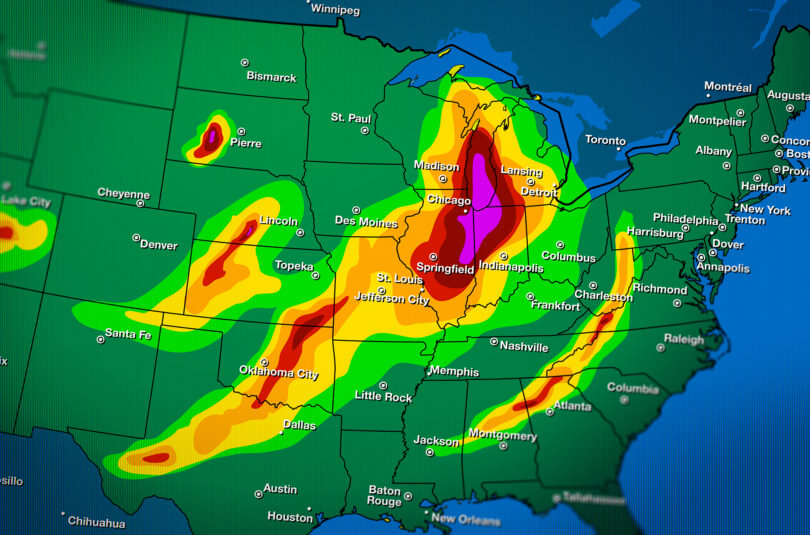A weather radar system purchased by the University of Georgia and the Georgia Institute of Technology could lead to improved weather forecasting in North Georgia – and provide both expanded educational opportunities for students and enhanced research capabilities for the two institutions.
“The acquisition of this radar is a game-changer for our state,” said Marshall Shepherd, director of UGA’s Atmospheric Sciences Program. “Not only does it provide a potentially lifesaving service for Georgians, it is a unique teaching and research tool for students at both institutions.” The radar will enable new research opportunities related to severe weather observations, winter weather forecasting, urban flood assessment, birds and even insects, Shepherd said.
Severe weather is a consistent threat to North Georgia that can lead to loss of life and property. The new radar system will fill a well-known gap in radar coverage over northeastern Georgia caused by the existing NEXRAD network coverage and terrain. A large landfill also causes blockage of the Terminal Doppler Weather Radar beam located near Hartsfield-Jackson Atlanta International Airport.
A feed from the commercial Furuno WR-2100 radar, which will be located in Gwinnett County, will be shared with the National Weather Service in Peachtree City and with other interested organizations. Beyond tornadoes and other severe storms, the radar could help forecasters predict winter precipitation and provide better rainfall estimates for flood warnings.
“The radar would be used collaboratively to provide enhanced warning for people in North Georgia, to provide educational opportunities to students at both institutions, and to provide research opportunities for UGA’s Atmospheric Science Program, Georgia Tech Research Institute’s Severe Storms Research Center, and Georgia Tech’s School of Electrical and Computer Engineering,” said John Trostel, the SSRC’s director.
Trostel and colleagues at GTRI became aware of the radar’s availability and reached out to UGA colleagues about collaborating on the acquisition. The 3-year-old device, which operates in the X-band, had been used at the manufacturer’s research facility.
John Knox, Josiah Meigs Distinguished Teaching Professor in the UGA department of geography, also envisions the radar information serving the public in another way. The student-run digital meteorology program at UGA, “WeatherDawgs,” serves over 70,000 followers across North Georgia.
“The radar would allow UGA students to learn how to view, interpret and use X-band radar data as well as how best to communicate it to the public,” Knox said.
Jessica Losego, a research scientist at the SSRC, said the new device will support the long-term goals of the center and expand weather-forecasting collaboration.
“This is a unique opportunity for collaboration, and we look forward to working with UGA and the NWS to maximize this radar’s utility for research, education and operations,” Losego said. “This equipment will support our efforts to understand the evolution and dynamics of severe storms in Georgia and lead to better capabilities for tracking these storms.”
The weather radar cost approximately $150,000 and was acquired through donations and internal funding at UGA and Georgia Tech. Shepherd and Tom Mote, the founding director of the Atmospheric Sciences Program at the University of Georgia and an associate dean in the Franklin College of Arts and Sciences, contributed funds from institutional research budgets. A significant financial gift was also acquired from Elaine Neil, a long-time donor in the UGA department of geography, which houses the Atmospheric Sciences Program.
At Georgia Tech, funds were provided by GTRI’s Sensors and Electromagnetic Applications Laboratory and the Aerospace, Transportation and Advanced Systems Laboratory, the Georgia Tech Office of the Executive Vice President for Research, and Georgia Tech’s College of Engineering.
A 1998 tornado that stuck Gainesville led to appointment of a task force to study steps that could be taken to protect citizens from future severe weather. Among its recommendations were the addition of a “gap-filling” radar for northeastern Georgia. Once it is placed in Gwinnett County after testing at GTRI, the new Georgia Tech-UGA radar will help to address that decades-old recommendation.








